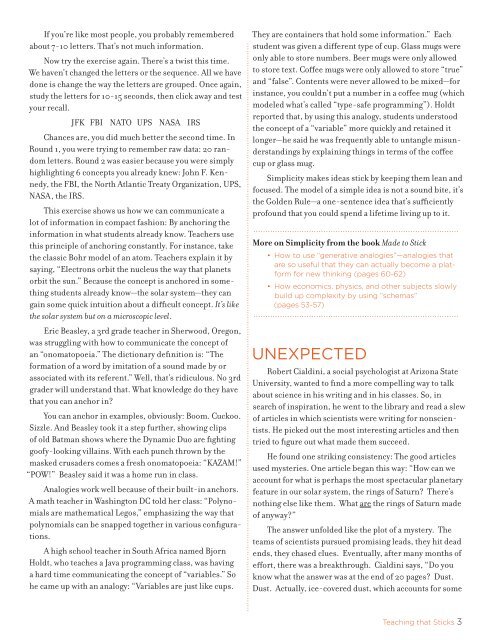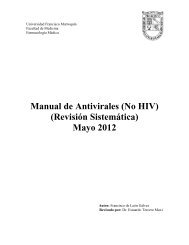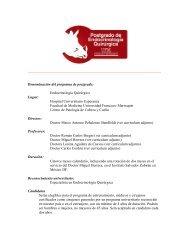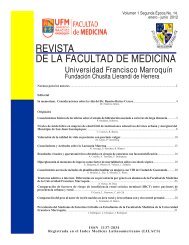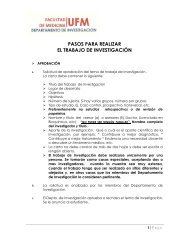Teaching That Sticks (pdf)
Teaching That Sticks (pdf)
Teaching That Sticks (pdf)
- No tags were found...
You also want an ePaper? Increase the reach of your titles
YUMPU automatically turns print PDFs into web optimized ePapers that Google loves.
If you’re like most people, you probably remembered<br />
about 7-10 letters. <strong>That</strong>’s not much information.<br />
Now try the exercise again. There’s a twist this time.<br />
We haven’t changed the letters or the sequence. All we have<br />
done is change the way the letters are grouped. Once again,<br />
study the letters for 10-15 seconds, then click away and test<br />
your recall.<br />
JFK FBI NATO UPS NASA IRS<br />
Chances are, you did much better the second time. In<br />
Round 1, you were trying to remember raw data: 20 random<br />
letters. Round 2 was easier because you were simply<br />
highlighting 6 concepts you already knew: John F. Kennedy,<br />
the FBI, the North Atlantic Treaty Organization, UPS,<br />
NASA, the IRS.<br />
This exercise shows us how we can communicate a<br />
lot of information in compact fashion: By anchoring the<br />
information in what students already know. Teachers use<br />
this principle of anchoring constantly. For instance, take<br />
the classic Bohr model of an atom. Teachers explain it by<br />
saying, “Electrons orbit the nucleus the way that planets<br />
orbit the sun.” Because the concept is anchored in something<br />
students already know—the solar system—they can<br />
gain some quick intuition about a difficult concept. It’s like<br />
the solar system but on a microscopic level.<br />
Eric Beasley, a 3rd grade teacher in Sherwood, Oregon,<br />
was struggling with how to communicate the concept of<br />
an “onomatopoeia.” The dictionary definition is: “The<br />
formation of a word by imitation of a sound made by or<br />
associated with its referent.” Well, that’s ridiculous. No 3rd<br />
grader will understand that. What knowledge do they have<br />
that you can anchor in?<br />
You can anchor in examples, obviously: Boom. Cuckoo.<br />
Sizzle. And Beasley took it a step further, showing clips<br />
of old Batman shows where the Dynamic Duo are fighting<br />
goofy-looking villains. With each punch thrown by the<br />
masked crusaders comes a fresh onomatopoeia: “KAZAM!”<br />
“POW!” Beasley said it was a home run in class.<br />
Analogies work well because of their built-in anchors.<br />
A math teacher in Washington DC told her class: “Polynomials<br />
are mathematical Legos,” emphasizing the way that<br />
polynomials can be snapped together in various configurations.<br />
A high school teacher in South Africa named Bjorn<br />
Holdt, who teaches a Java programming class, was having<br />
a hard time communicating the concept of “variables.” So<br />
he came up with an analogy: “Variables are just like cups.<br />
They are containers that hold some information.” Each<br />
student was given a different type of cup. Glass mugs were<br />
only able to store numbers. Beer mugs were only allowed<br />
to store text. Coffee mugs were only allowed to store “true”<br />
and “false”. Contents were never allowed to be mixed—for<br />
instance, you couldn’t put a number in a coffee mug (which<br />
modeled what’s called “type-safe programming”). Holdt<br />
reported that, by using this analogy, students understood<br />
the concept of a “variable” more quickly and retained it<br />
longer—he said he was frequently able to untangle misunderstandings<br />
by explaining things in terms of the coffee<br />
cup or glass mug.<br />
Simplicity makes ideas stick by keeping them lean and<br />
focused. The model of a simple idea is not a sound bite, it’s<br />
the Golden Rule—a one-sentence idea that’s sufficiently<br />
profound that you could spend a lifetime living up to it.<br />
More on Simplicity from the book Made to Stick<br />
• How to use “generative analogies”—analogies that<br />
are so useful that they can actually become a platform<br />
for new thinking (pages 60-62)<br />
• How economics, physics, and other subjects slowly<br />
build up complexity by using “schemas”<br />
(pages 53-57)<br />
UNEXPECTED<br />
Robert Cialdini, a social psychologist at Arizona State<br />
University, wanted to find a more compelling way to talk<br />
about science in his writing and in his classes. So, in<br />
search of inspiration, he went to the library and read a slew<br />
of articles in which scientists were writing for nonscientists.<br />
He picked out the most interesting articles and then<br />
tried to figure out what made them succeed.<br />
He found one striking consistency: The good articles<br />
used mysteries. One article began this way: “How can we<br />
account for what is perhaps the most spectacular planetary<br />
feature in our solar system, the rings of Saturn? There’s<br />
nothing else like them. What are the rings of Saturn made<br />
of anyway?”<br />
The answer unfolded like the plot of a mystery. The<br />
teams of scientists pursued promising leads, they hit dead<br />
ends, they chased clues. Eventually, after many months of<br />
effort, there was a breakthrough. Cialdini says, “Do you<br />
know what the answer was at the end of 20 pages? Dust.<br />
Dust. Actually, ice-covered dust, which accounts for some<br />
<strong>Teaching</strong> that <strong>Sticks</strong> 3


